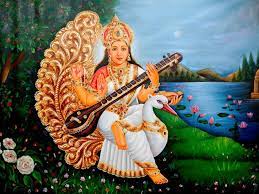Music in India has been an integral part of the socio-religious life of the people, since time immemorial. Unesco World Heritage site of Bhimbetka rock shelters, near Bhopal in Madhya Pradesh, is estimated to be 30 millennia old and has paintings of dance. The cave art of Bhimbetka illustrates musical instruments such as Gongs, Bowed Lyre and Daf etc. A narrow bar-shaped polished stone celt like a music instrument excavated at was excavated at Sankarjang in Odisha, is estimated to be around 6,000 years old. There have been excavations of Indus Valley Civilization era paintings on pottery of a man with a Dhol hanging from his neck and a woman holding a Drum under her left arm. Among the Vedas, the Samaveda deals with music.
Carnatic and Hindustani music traditions –
Among Indian classical music, there are two main traditions, Carnatic music predominantly practised in the Southern part of India and Hindustani Music predominantly practised in northern, central and eastern parts of India. Carnatic music originated under the Vijayanagar empire whereas the tradition of Hindustani music can be traced back to the Vedic age. In Carnatic music tradition, the emphasis is on the vocals as most compositions are written to be sung, and even when played on instruments, they are meant to be performed in a singing style.
Light classical music –
There are many types of light classical music. Some of the forms are Thumri, Dadra, Bhajan, Gazal, Chaiti, Kajri, Tappa, Natya Sangeet and Qawwali. These forms place emphasis on explicitly seeking emotion from the audience, as opposed to the classical forms.
